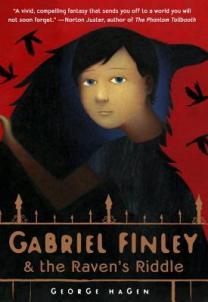Dominic Hall and Holly Stroud have been connected since they were very young and lived across the street from one another in a town in the North of England by the Tyne River. As five year old Dom and Holly were walking on garden walls, Dom was hit by a stone thrown by the new boy in town, Vincent McAlinden and that’s where the story really begins. Vincent who is three years older than Dom, lived in “the lower wasteland,” “squatted in holes in the dirt by smouldering fires. He wore a sheath knife at his waist. He smoked, he spat and snarled.”
older than Dom, lived in “the lower wasteland,” “squatted in holes in the dirt by smouldering fires. He wore a sheath knife at his waist. He smoked, he spat and snarled.”
Their walking on walls advances to homemade tightropes after a visit to the circus and later to wire ones that Holly’s father gets from work . It also becomes a metaphor for their dreams of walking in air as well as the balancing act Dom has to make of his life. As Dom and Holly excell at primary school, other boys are hit with mis McKane’s cane and Vincent is always on the edge of their lives causing trouble. In primary school Dom watches as another boy falls under Vincent’s bullying allure. When Dom and Holly graduate and move on to high school, Dom feels out of place. He is a caulker’s son and grandson of a tank cleaner while many of the others are sons and daughters of office workers, doctors and teachers. Dom wants to be a tightrope walker, to read and wander, to go far but heis is conflicted and also wants to be hard like Vincent . His bitter father is frightened by his potential and tells him “never forget where you come from.” .
In high school he starts to hang out with Vincent McAlinden and changes into a brutish thing. His father welcomes this new friendship. When Vincent shows up at his house with an air gun, he encourages Dom to go with Vincent. He thinks Dom needs toughening up. Vincent takes Dom out shooting animals for the thrill of it, they curse, smoke and drink, they fight with knives and soon Vincent teaches him to steal. Their relationship is intense as Vincent is something of a psychopath. Their friendship is broken quickly when their actions come to the awareness of the police, but McAlinden enters their lives again with devastating consequences when Dom and Holly are about to take their University entrance exams.
The struggle inside Dom between becoming a writer or staying in his hometown and working in the shipyards is central. Almond used the Geordie dialect of the Newcastle Tyneside region to write this book and the sense of place is deep. Listening to the audiobook narrated by Richard Halverson was a wonderful experience.
Almond’s writing is very sensual. You smell the shipyard, hear the noises and see the grime. You can hear the thrashing of the cane on students’ hands in primary school. The setting in the fifties through the late sixties is clear with references to bands and poets. The characters are clear as well. There is a mute wanderer Tom, who lives in a mining hole where he has painted  images, and who seems to watch over Holly and Dom. There are supportive teachers and their fathers are well drawn. Holly’s is very encouraging of her artistic and academic talents while Dom’s takes longer, but eventually begins to see that Dom needs to move on.
images, and who seems to watch over Holly and Dom. There are supportive teachers and their fathers are well drawn. Holly’s is very encouraging of her artistic and academic talents while Dom’s takes longer, but eventually begins to see that Dom needs to move on.
This is a terrific book that absolutely grabs you with its rawness and beauty. I believe it may have been published for adults in the UK while in the US it was published for young adults.

